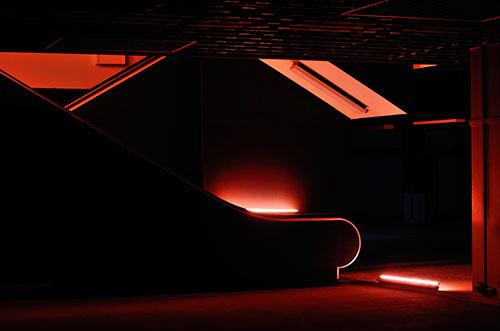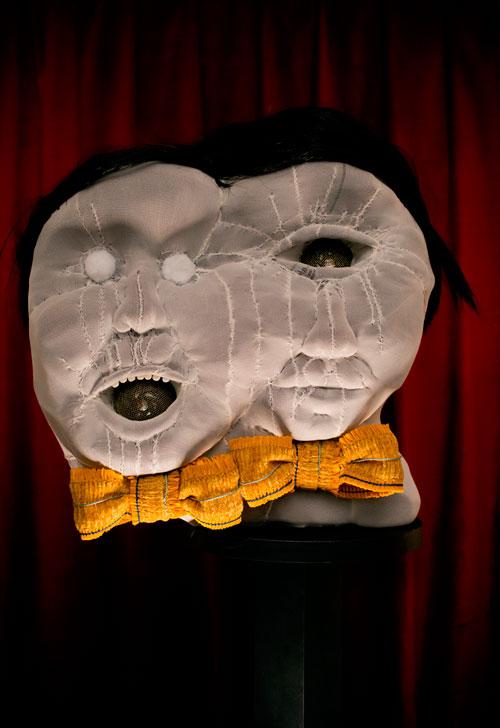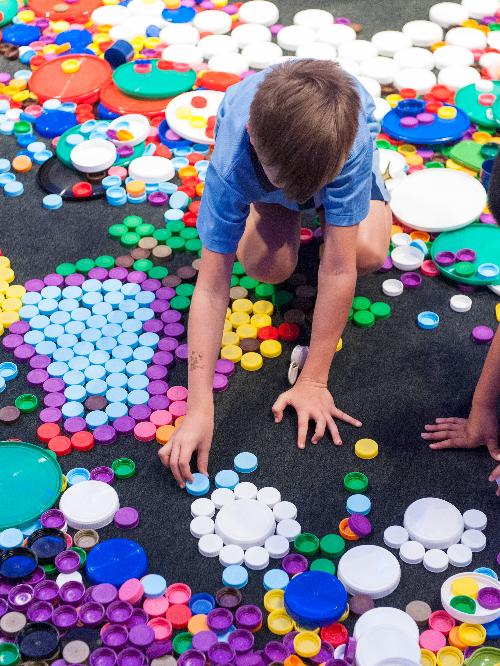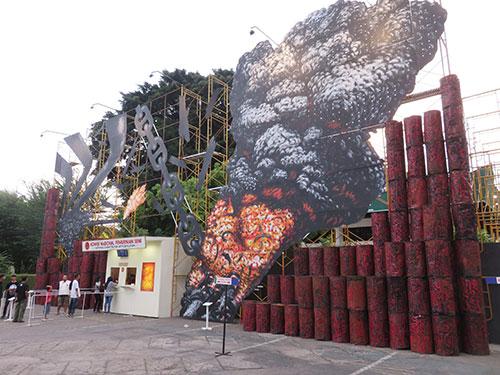.jpg)
Hossein Valamanesh’s video installation Char Soo takes the viewer inside a day in the grand bazaar in Arak, Iran from the darkness before dawn through the bustle of the day to the empty night. The installation consists of four large projections on four walls placing the viewer in the middle of the main intersection of the bazaar, the char soo, a word meaning "four sides" or "four directions". Commissioned for the Adelaide Film Festival and premiered at Samstag Museum, Char Soo was shot with the help of Hossein’s filmmaker son Nassiem on location in Arak. The view of Iran presented by Valamanesh, who was born in Tehran in 1949 and has lived in Adelaide since 1975, is neither romantic nor exotic. As Hamid Saveri’s catalogue essay states: ‘Char Soo is not trying to show particularities; it is neither a metaphor of Iran, nor does it stand for Arak’.
The work’s apparent simplicity underscores its elegance and aesthetic refinement, traits that have been longstanding hallmarks of Valamanesh’s art. There is a casualness to Char Soo; a film of a day in a bazaar, the movement of ordinary people going about ordinary life produces a calm familiarity. Families, groups of friends, and lone people pass small shopfronts selling suitcases, shoes, hats, cheap t-shirts, jewellery and bike wheels; a man sits for what must be hours in front of a shop selling copperware; at different points food trolleys are wheeled through the bazaar. Yet the complexities soon emerge. Sitting and watching Char Soo gives the viewer space to examine point of view: the personal or social projection of what this place might stand for in this current political moment. The markers of place – such as the Farsi script of the signs, the architecture of the roof, the particular food sold from trolleys, the presence of the Mullahs – are not glorified or particularly drawn to our attention. As we sit for the 28 minutes of the work’s duration, lingering for the next repetition, these projections are to some degree put aside. Something we might be looking for gets forgotten or lulled by the rhythms and movement of ordinary everyday life.
.jpg)
Char Soo is not pretending to be, a true-to-life presentation: some of the passers by acknowledge the camera, and the fading out of people moving through the bazaar is a repetitive reminder of the compression of time. This compression is subtle and does not impact on the perception that we are watching the normal speed of life. But it does create a feeling of being a loiterer in the char soo, of being a person sitting idly and watching the world pass by, and of thoughts and ideas, like the surrounding people, coming and going.
The position of viewer as loiterer is enhanced by the absence of any clear narrative in the video, or of any zooming or panning that might direct or focus the eye. The viewer might keep an eye on certain people in the bazaar, such as the man sitting in front of the copperware shop, but is soon distracted by other people and other sights. Valamanesh encourages this distraction of idleness; three times throughout Char Soo the perspective of the camera shifts from a still eye-level shot of each direction of the bazaar to smaller details within the scene – a birdcage, a blue-tiled pool, the ceiling, water reflections, dust in filtered light, a man selling cabbage, a jewellery stand, a stall selling cheap mass produced goods. While these short interruptions could be seen to break up the monotony of the length of the work, they also visually reproduce the workings of idle thought, of distractions and tangents followed and then left alone. The viewer is prepared for this aspect of Char Soo by one of the accompanying works, Passing Time, another video installation and collaboration with Nassiem Valamanesh. Close to the entry to Char Soo, in a black box on a black screen, two hands continuously form and reform the infinity sign. The video is on a four-minute loop, but there is no clear beginning or end, only the endless passing of time, and the marking of that passing through idle activity. As in so many of his works, Valamanesh’s Char Soo creates a space for quiet contemplation amidst the complexity of life.












